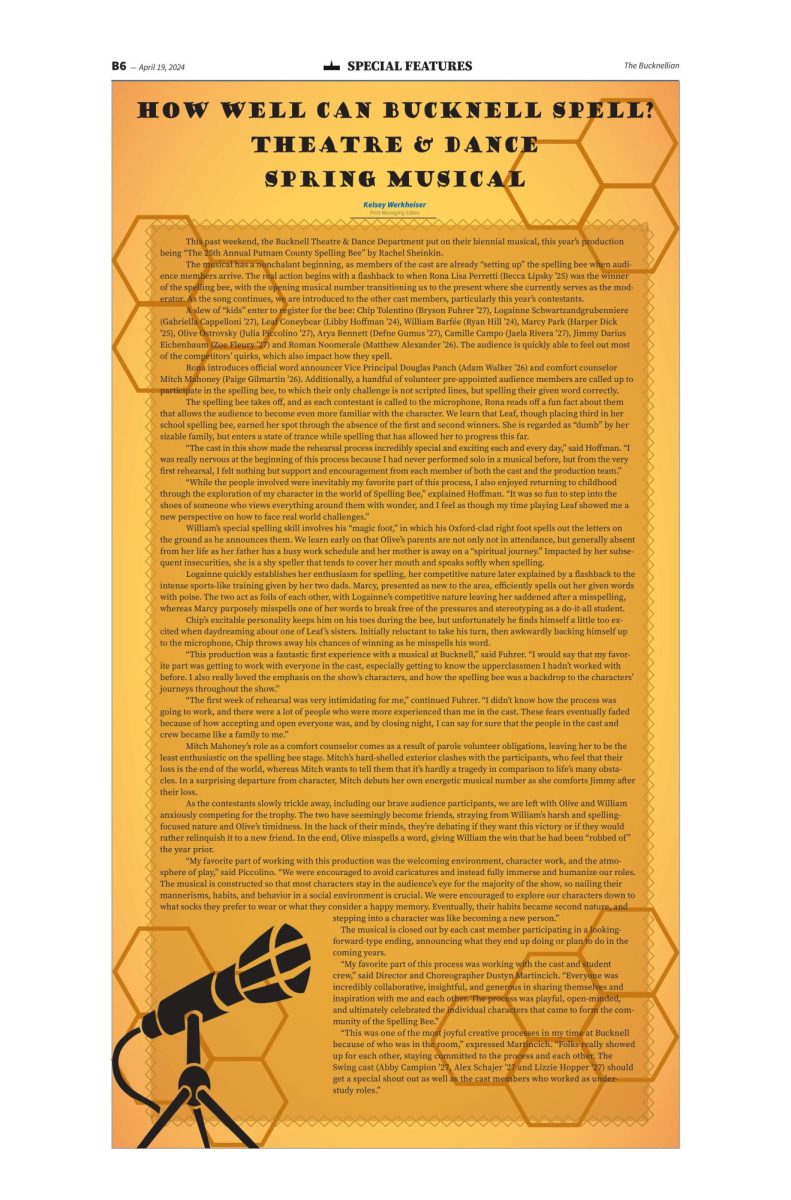Art therapy: A viable career path for psychology majors
October 27, 2016
Hope Heffner ’08, an art therapist at the Children’s Hospital of Philadelphia (CHOP), spoke to the community on Oct. 24 about the viability of art therapy and the healing potential it provides.
The talk was part of a larger lecture series entitled “Improving Children’s Lives: Psychology Alumnae Describe Their Work.” The series was organized by Professor of Psychology Dr. Chris Boyatzis. Boyatzis noted that he’s “always heard from students that they are hungry for career options, so he created a series that would showcase diverse careers.”
Heffner spoke to about 25 students, mostly psychology majors, about her work utilizing the power of healing through art. After graduating from the University with a degree in psychology and studio art, Heffner combined her passions into a career that impacts children’s lives every day. She earned her master’s degree in creative art therapy from Drexel University and began employment at CHOP in 2013.
Understanding that art therapy can seem like an illegitimate form of therapy, Heffner was quick to emphasize the theoretical underpinnings of the field and the counseling training she undertook to become certified. According to Heffner, art therapy today can combine aspects of art with either therapy, which views the act of creation as a healing process, or with psychotherapy, which views the final product as a reflection of the inner psyche, usually depending on the age of the patient.
At CHOP, Heffner interacts with children of all ages and stages of diseases, which makes preparation for patient interaction difficult. Art therapy, according to Heffner, focuses on providing materials and prompts which match the patient. Materials and prompts exist on spectrums (loose to controlled or unstructured to structured). For example, a patient with anxiety may respond more positively to a structured prompt with more controllable materials.
Heffner also commented on the function of art in making positive meanings out of negative experiences. Time spent in the hospital, especially for children, can be scary. Art therapists strive to have the child engage in positive meaning and ensures that the experience does not leave a negative impact on his or her development.
Tessa Sarr ’17, a studio art and Italian studies major, said that after attending the presentation that she was, “thinking about art therapy as a further application [of studio art] outside of school.”
At the conclusion of the talk, Heffer addressed some of the issues with art therapy, for example how it is a field whose practitioners are mostly white women. The theory behind art therapy was created in a specific cultural context that does not always jive with patients’ experience of reality. This can lead to misdiagnoses and ineffectiveness. By remaining vigilant of their own social location, art therapists can counter some of that disciplinary bias.


























